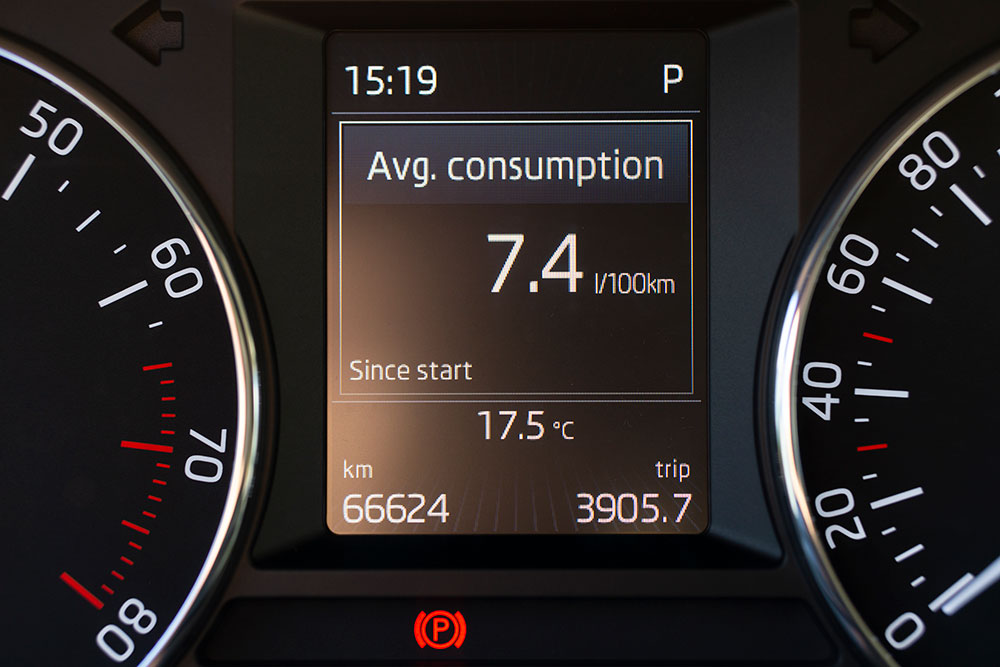Eco-drive your dollar further
Simple driving strategies can save you money and help the environment.

Australians are buying environmentally friendly electric vehicles (EVs) in increasing numbers.
The Electric Vehicle Council’s State of Electric Vehicles 2021 report revealed 8688 EVs were sold in the first half of 2021*, compared with 6900 for the whole of 2020.
This trend will continue as more models become available and prices come down.
However, owning a more fuel-efficient or zero-emission vehicle is not an immediate option for many of us.
There are simple driving techniques that can reduce fuel use and emissions, helping the environment and your budget.
Fuel-efficient driving, also called ecodriving, encompasses driver behaviours, vehicle maintenance and non-driving actions, which can deliver fuel savings of 5-10 percent**.
“One of the benefits of eco-driving is the reduction in fuel consumption is cumulative – the more strategies used the less fuel is consumed,” RACQ Head of Public Policy Susan Furze said.
Most cars have fuel consumption gauges and drivers can see how their fuel use decreases when using one or more of the strategies.
Driving smoothly is crucial to achieving better fuel economy so the more you brake and accelerate, the more fuel is consumed.
This applies in urban environments and on open roads.
In a manual vehicle, shift through the gears as quickly as possible and always use the highest gear possible as less revs equals less fuel used.
Modern vehicles are designed for fuel efficiency and regular servicing will reduce fuel use.
Maintain tyres at the maximum recommended inflation as this will reduce wear and tear and rolling resistance. Think how much effort it is to push a wheelbarrow with a flat tyre.
Reducing the impact of weight and drag on your vehicle also increases fuel efficiency.
Excess weight can add up, especially if items are heavy, such as tools.
Removing roof racks may seem minor, but they can cause a lot of wind resistance.
Consider ways you can spend less time behind the wheel.
The less time you spend on the road, the less emissions you are creating.
Trip planning (finding the shortest route), sharing trips with others and trip chaining (doing a number of errands in one outing) reduce kilometres travelled.
Ultimately, active alternative such as walking, riding or using public transport will also reduce your emissions and all three options provide an opportunity to relax and unwind in our ever-busier world.
Eco-driving tips
Driving strategies |
Vehicle strategies |
Non-driving actions |
|
|
|
*Sales figures based on Federal Chamber of Automotive Industries (FCAI) data and the Electric Vehicle Council’s Tesla estimate. Tesla does not disclose local sales figures.
**Ecowill, ecodrive.org
Related topics
Things to note
The information in this article has been prepared for general information purposes only and is not intended as legal advice or specific advice to any particular person. Any advice contained in the document is general advice, not intended as legal advice or professional advice and does not take into account any person’s particular circumstances. Before acting on anything based on this advice you should consider its appropriateness to you, having regard to your objectives and needs.
Insurance Products (excluding Travel Insurance) are issued by RACQ Insurance Limited ABN 50 009 704 152 (RACQI) and arranged by its agent, RACQ Distribution Services Pty Ltd (RDS) ABN 35 116 361 650, AFSL 567130 and RDS' authorised representatives (including RACQ Operations Pty Ltd ABN 80 009 663 414, AR No. 234978 (RACQO). Conditions, limits and exclusions apply. RDS and RACQO are in the RACQ group of companies. One of the companies in the RACQ group of companies has a minority shareholding in RACQI.
RDS and RACQO have not taken your personal objectives, circumstances or needs into account when preparing advice regarding insurance products and you will need to consider whether the advice is appropriate for you. Read the Product Disclosure Statement (PDS) and any applicable Supplementary PDS before making a purchase decision on this product. You can also access our Target Market Determinations on this website. RDS receives a commission from RACQI for the policies it arranges. RACQO receives fees paid for services it provides to RDS. Further details about remuneration are available on request prior to purchasing.
Banking and loan products issued by Members Banking Group Limited ABN 83 087 651 054 AFSL/Australian credit licence 241195 trading as RACQ Bank. Terms, conditions, fees, charges and lending policies apply. This is general advice only and may not be right for you. This information does not take your personal objectives, circumstances or needs into account. Read the disclosure documents for your selected product or service, including the Financial Services Guide and the Terms and Conditions, and consider if appropriate for you before deciding.
Except for RACQ Bank, any RACQ entity referred to on this page is not an authorised deposit-taking institution for the purposes of the Banking Act 1959 (Cth). That entity’s obligations do not represent deposits or other liabilities of RACQ Bank. RACQ Bank does not guarantee or otherwise provide assurance in respect of the obligations of that entity, unless noted otherwise.
RACQ Bank subscribes to the Customer Owned Banking Code of Practice which establishes higher standards than the law requires. The Code reflects modern consumer expectations and developments in approaches to issues such as consumer vulnerability, guarantors, and supporting customers through financial hardship. Please read our Customer Owned Banking Code of Practice page for more information.
RACQ Operations Pty Ltd (ABN 80 009 663 414 AR 000234978) and Members Travel Group Pty Ltd (ABN 45 144 538 803 AR 000432492) are acting as an Authorised Representative of the issuer of the insurance, Tokio Marine & Nichido Fire Insurance Co., Ltd. (ABN 80 000 438 291 AFSL 246 548). Any advice set out above is general in nature only, and does not take into account your objectives, financial situation or needs. Before purchasing any travel products, please consider the RACQ Travel Insurance Product Disclosure Statement (PDS) and the Target Market Determinations (TMDs) that apply to these products. Whilst the PDS outlines the Terms and Conditions of these products, the TMDs outline the intended class of customers that comprise the target market for these travel products. This will allow you to consider which products best suit your objectives, financial situation and needs and consider the products appropriateness to your personal circumstances. TMDs also outline matters involving the distribution and the review of these products. The PDS, Supplementary PDS and TMDs for each travel product can be found here.
